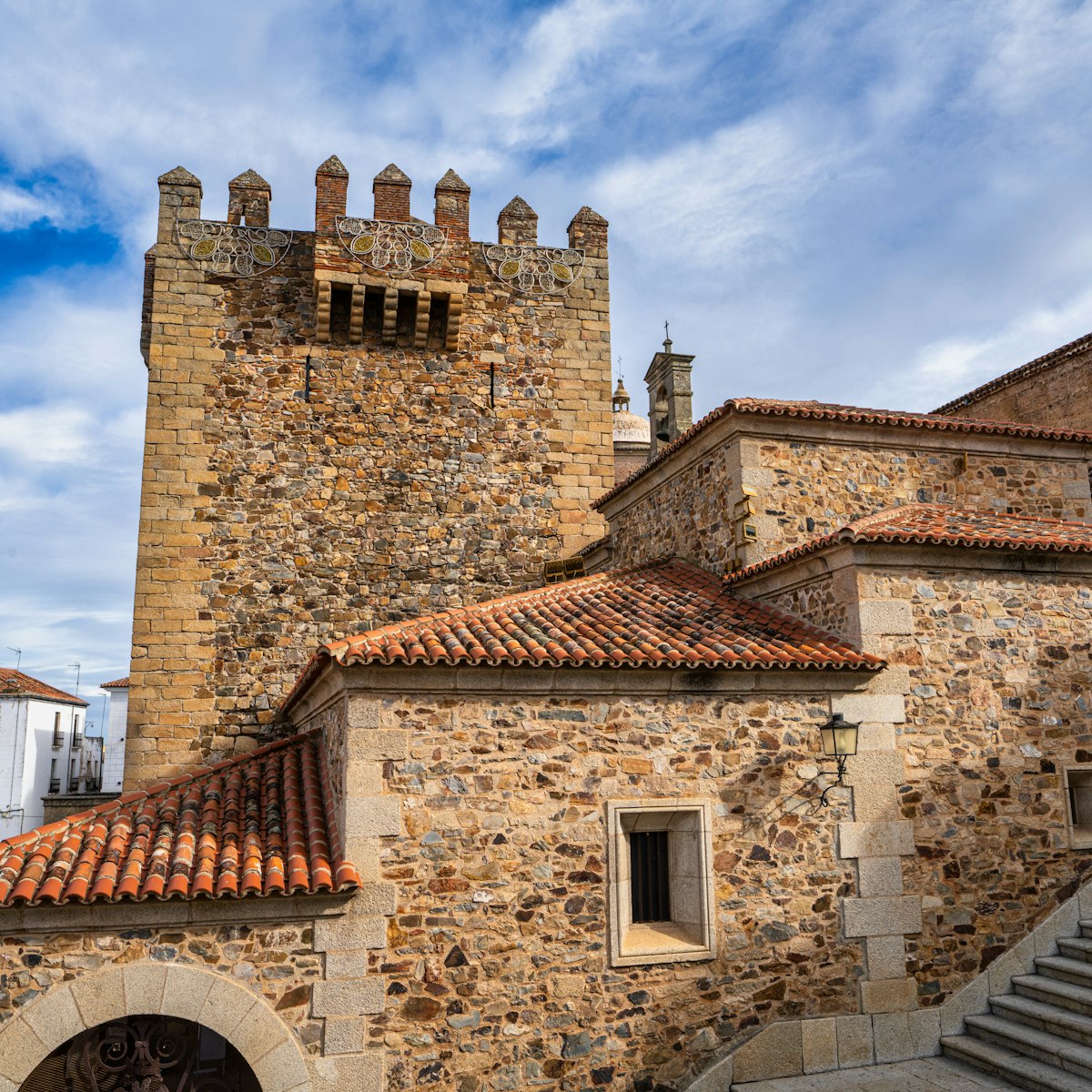Trujillo's main square is one of Spain's most spectacular plazas, surrounded by baroque and Renaissance stone buildings sporting intricately carved facades, topped with a skyline of towers, turrets, cupolas, crenellations and nesting storks.
A large, bronze equestrian statue of the conquistador Francisco Pizarro by American sculptor Charles Rumsey dominates the plaza. But all is not as it seems. Apparently Rumsey originally sculpted it as a statue of Hernán Cortés to present to Mexico, but Mexico, which takes a dim view of Cortés, declined it, so it was given to Trujillo as Pizarro instead.
On the south side of the plaza, carved images of Pizarro and his lover Inés Yupanqui (sister of the Inca emperor Atahualpa) adorn the corner of the 16th-century Palacio de la Conquista. To the right is their daughter Francisca Pizarro Yupanqui with her husband (and uncle), Hernando Pizarro. The mansion was built in the 1560s for Hernando and Francisca after Hernando (the only Pizarro brother not to die a bloody death in Peru) emerged from 20 years in jail for murder. Higher up, a bas-relief carving shows the Pizarro family shield (two bears and a pine tree), the walls of Cuzco (in present-day Peru) and Pizarro's ships.
Off the plaza's northeastern corner lies the 16th-century Palacio de los Duques de San Carlos, with its sober classical patio, grand granite staircase and distinctive brick chimneys built in Mudéjar style (though some say they represent New World cultures conquered by Spain). Nowadays it's a convent for the Jerónimo order.
Also looming over the plaza is the 16th-century Iglesia de San Martín, with delicate Gothic ceiling tracery in its single nave, striking stained-glass windows, a 1724 altarpiece and a grand 18th-century organ. Climb up to the choir loft (right as you enter) for the best view.



